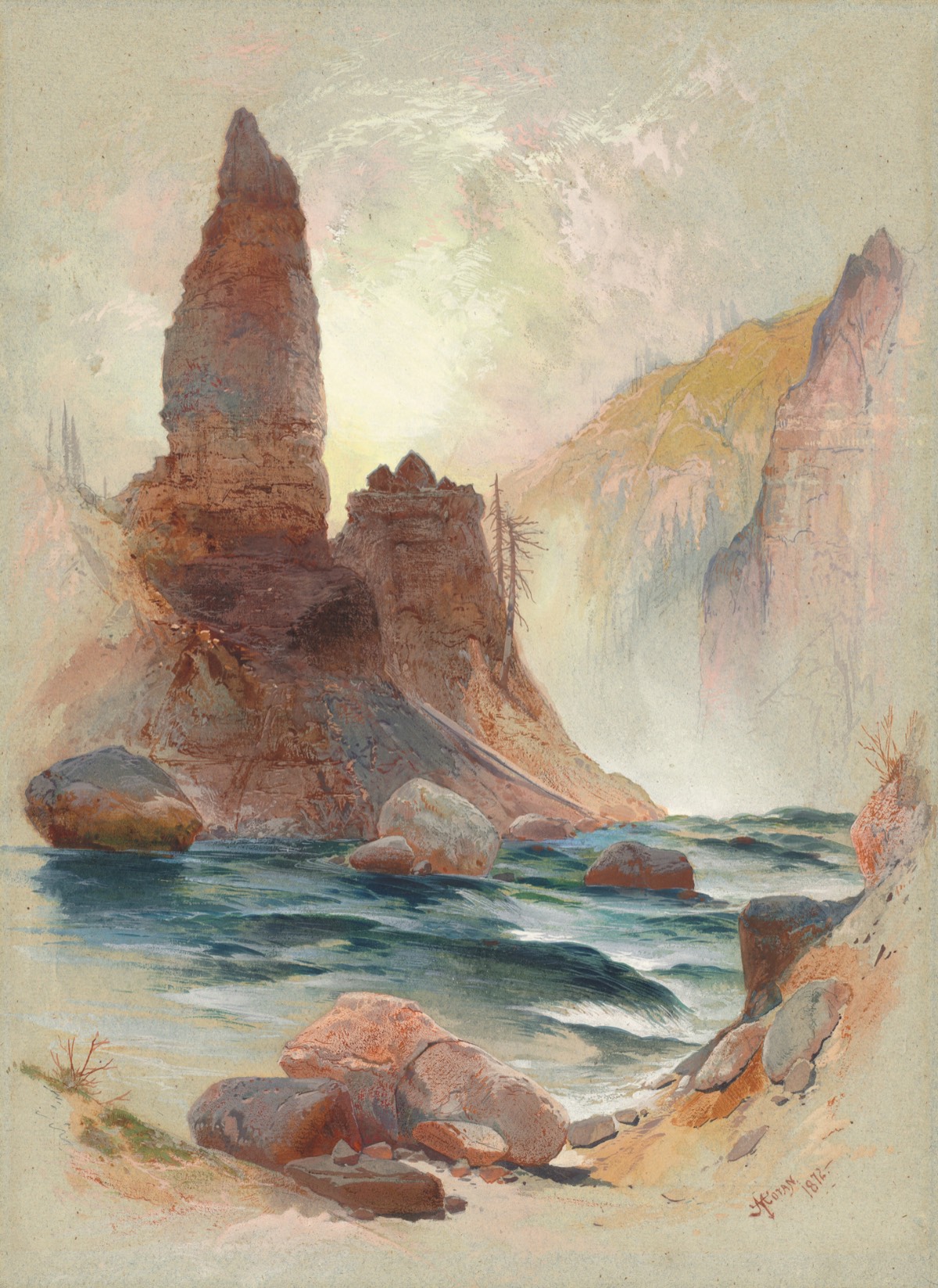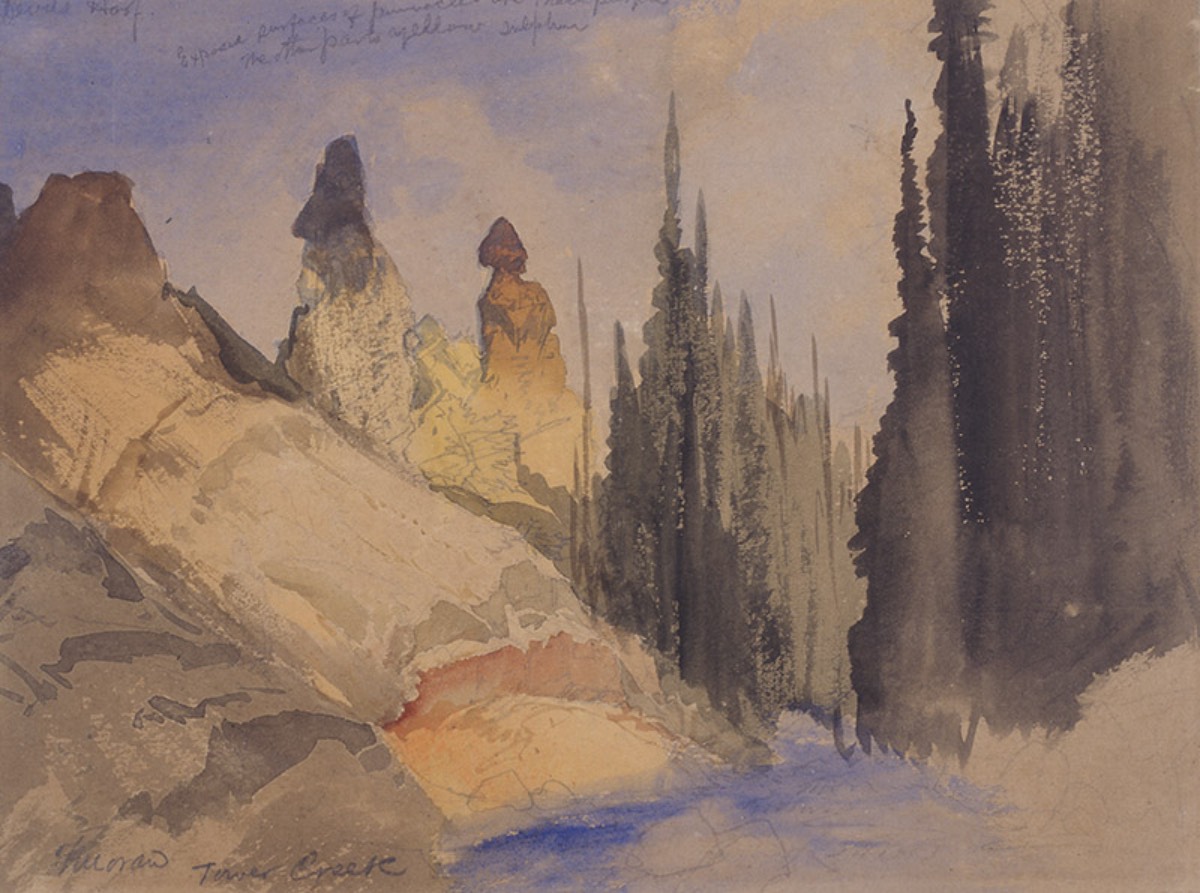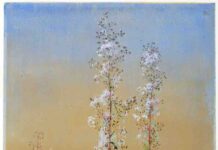
Sitting atop a volcanic hot spot, Yellowstone National Park lies mostly in Wyoming, but spreads into parts of Montana and Idaho as well. Among its breathtaking features, the park boasts an array of dramatic canyons; alpine rivers; lush forests; hot springs; and gushing geysers, including its most famous, Old Faithful. It’s also home to hundreds of animal species, including bears, wolves, bison, elk, and antelope. For much of the country, these riches remained hidden until Thomas Moran shared his vision of the landscape in the late 19th century.

Employed as an illustrator for Scribner’s Monthly, Moran first developed an interest in the Yellowstone area when he accepted an assignment to illustrate a magazine article titled, “The Wonders of the Yellowstone.” Having never been to the area, he worked from someone else’s crude sketches and notes.
Nevertheless, his work caught the attention of surveyor Ferdinand Hayden, who invited the artist on a geological study of the area that included the northwest region of Wyoming. Over the course of the journey, Moran filled his sketchbooks with images of deep caverns, spouting geysers, and sparkling mineral pools.


With a portfolio of sketches and watercolors, and his rations down to a few biscuits, Moran proceeded home to translate his artwork into finished paintings. In 1872, he completed a 7 x 12-foot oil painting, Grand Canyon of the Yellowstone that was displayed in Congress.

By capturing the national imagination with his majestic landscapes, he inspired a generation of Americans to take pride in the wild spaces of the West, even if they might never see them for themselves. And on March 1, 1872, President Ulysses S. Grant signed the Yellowstone National Park Protection Act into law, making Yellowstone the country’s first national park and, in fact, one of the first national parks in the world.
For more inspiring stories like this one, sign up for our free weekly e-newsletter.







